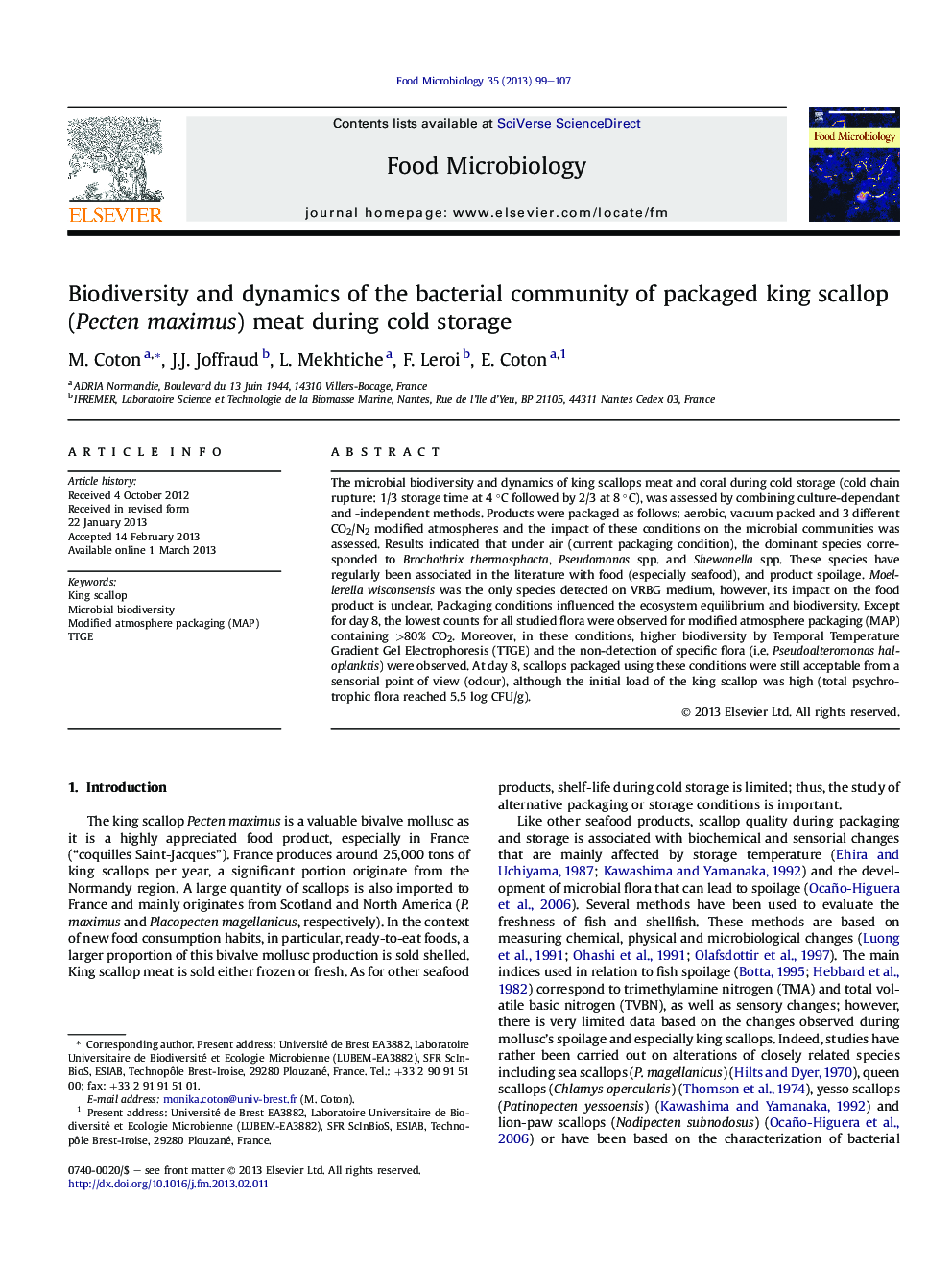| Article ID | Journal | Published Year | Pages | File Type |
|---|---|---|---|---|
| 4362990 | Food Microbiology | 2013 | 9 Pages |
The microbial biodiversity and dynamics of king scallops meat and coral during cold storage (cold chain rupture: 1/3 storage time at 4 °C followed by 2/3 at 8 °C), was assessed by combining culture-dependant and -independent methods. Products were packaged as follows: aerobic, vacuum packed and 3 different CO2/N2 modified atmospheres and the impact of these conditions on the microbial communities was assessed. Results indicated that under air (current packaging condition), the dominant species corresponded to Brochothrix thermosphacta, Pseudomonas spp. and Shewanella spp. These species have regularly been associated in the literature with food (especially seafood), and product spoilage. Moellerella wisconsensis was the only species detected on VRBG medium, however, its impact on the food product is unclear. Packaging conditions influenced the ecosystem equilibrium and biodiversity. Except for day 8, the lowest counts for all studied flora were observed for modified atmosphere packaging (MAP) containing >80% CO2. Moreover, in these conditions, higher biodiversity by Temporal Temperature Gradient Gel Electrophoresis (TTGE) and the non-detection of specific flora (i.e. Pseudoalteromonas haloplanktis) were observed. At day 8, scallops packaged using these conditions were still acceptable from a sensorial point of view (odour), although the initial load of the king scallop was high (total psychrotrophic flora reached 5.5 log CFU/g).
► High microbial biodiversity associated with king scallops during storage (at least 26 species). ► Impact of MAP on flora equilibrium especially at high CO2 concentrations. ► At day 8, scallops packaged with high CO2 concentrations were still acceptable from a sensorial point of view.
